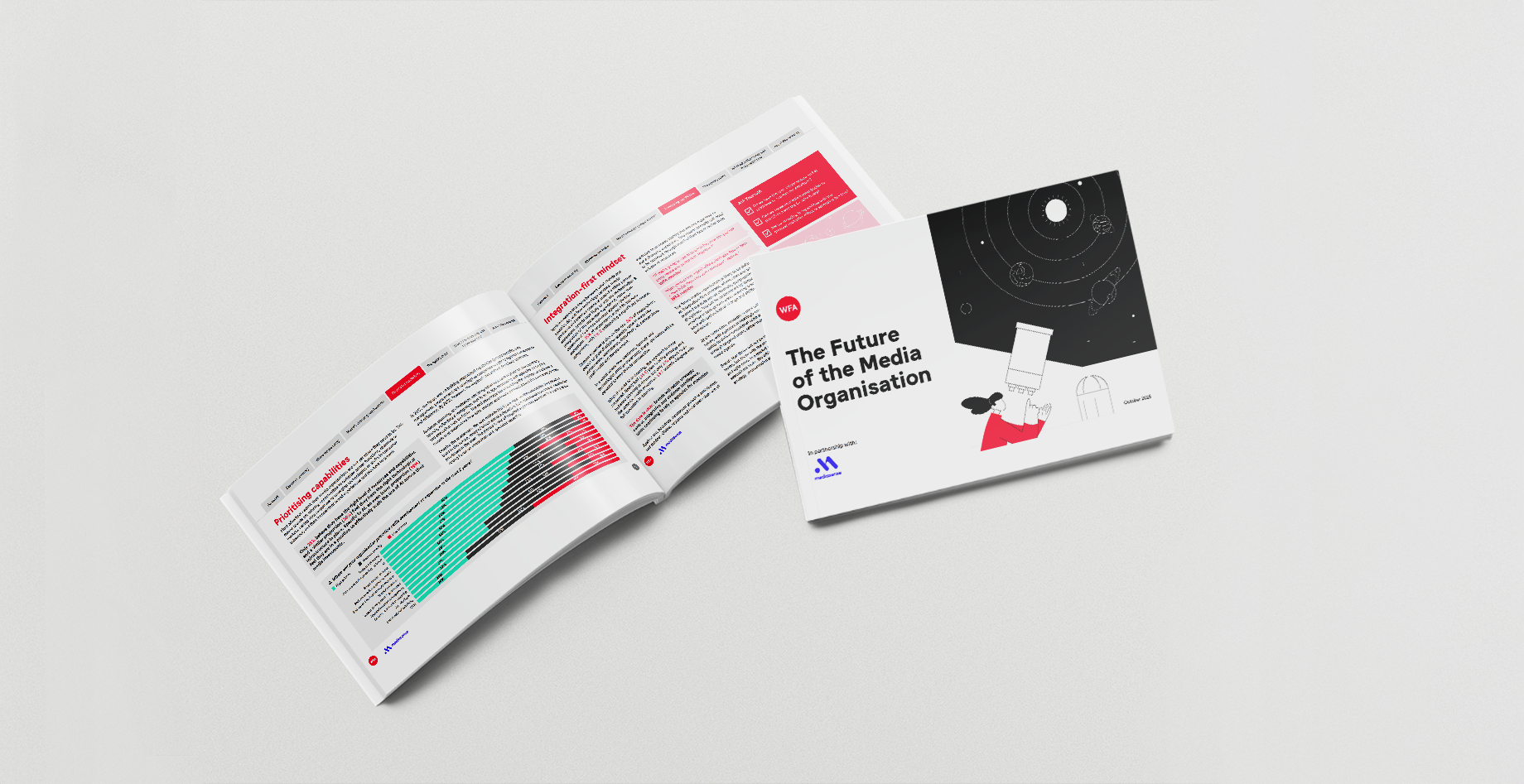The Future of the Media Organisation
Research from mediasense and the WFA reveals how leading brands are reimagining the role, structure and capabilities of their media teams - and where critical gaps still hold them back.

A joint study from mediasense and the WFA reveals how the media function is being transformed by the impact of digital and AI, highlighting the need for change in three key areas: integration, connection and partnerships. The Future of the Media Organisation report is based on responses from 56 of the world’s biggest companies representing $52billion in annual media spend.
Key Takeaways:
- The vast majority of organisations don’t feel that they have the right resources and capabilities in place
- Integration, measurement and AI readiness are emerging as critical areas of competitive advantage
- Media’s remit is expanding into ecommerce, data and creative, but its role is not always clearly defined
- Regional capability is hollowing out, creating new challenges for connecting global strategy and local execution
- Agencies remain vital partners, but brands increasingly want to own strategy and cross-functional orchestration in-house
Findings from the report include the fact that just 25% of marketers believe they have the right level of resources and capabilities, and a similar proportion (26%) feel they have the right technological infrastructure in place. When it comes to AI, an even lower proportion (19%) feel they are in a position to effectively scale the use of AI across their media investments.
“Big multinationals can no longer rely on their size to secure advantage when it comes to media. Instead, they need to build in-house capabilities and connections,” says Tom Ashby, Global Lead, Media Services at WFA.
Perhaps the biggest wake up call for multinationals is that they can no longer use their market power alone to drive success. AI is removing competitive advantage on execution. The differentiator is how well linked media is with other marketing workstreams.
In large companies, there is also a dynamic between global and operating markets that needs to be better managed. With regional teams being removed, the potential for miscommunication is amplified, making it more vital than ever to upskill strategic capability across the organisation.
Contrary to some industry commentary, agencies will continue to be vital but only where they can bring transformative ideas and activations to the table. Simply transacting on behalf of clients is not a long-term business plan for advertising holding companies.
“This study is an important barometer of the level of progress being achieved by brands on the journey towards greater customer centricity,” says Ryan Kangisser, Chief Strategy Officer at mediasense. “No longer a strategic endeavour, they are now structuring themselves around the consumer in a more intentional way. Silos are collapsing, technology is talking to each other, and AI is accelerating the speed of transformation. It’s an exciting time to be responsible for media even if ‘media’ (in the traditional sense) is only a part of what the role now demands.”
Five Key Areas Media Leaders Need to Manage for the Future
- Media must be rooted in growth strategy: Only 35% of multinationals believe media’s contribution to growth is well understood beyond the media team. Unless media is positioned as a strategic driver, it risks being deprioritized in the next budget cycle. The C-suite needs to know how media drives growth.
- Integration is the next competitive advantage: AI and automation will level the playing field in execution. The performance (long and short-term) differentiator will be integration: connecting brand, content, commerce and data into a seamless consumer experience. Media leaders need to invest in orchestration roles, shared KPIs, and governance frameworks that will better connect teams.
- Capabilities matter more than headcount: Competitive advantage will come from targeted capabilities in areas such as audience planning, measurement, data fluency and AI. Bigger is not always better and the priority should be on capability-building in areas that create multiplier effects.
- Rethink the global-local balance: Regional capability, knowledge and leadership is being hollowed out as big companies seek to reduce costs. As a result, brands need to create a new connection between global and local. There are many potential solutions from rethinking regional hubs to cross-market pods or technology platforms, but without a deliberate model, global sets the rules and local teams improvise, leading to inconsistency.
- Redefine the agency relationship: Agencies remain vital for execution and scale, but strategy should move in-house. Brands want partners who can integrate, advise and innovate – not just manage spend. Agencies should be selected for their ability to deliver transformation.
“The Future of the Media Organisation study shows that this is a pivotal moment for brands to rethink how their media organisations are designed, from structure and skills to the role media plays in driving growth,” says Jack Shearring, Director of Transformation at mediasense. “The findings highlight real challenges, but also a huge opportunity to build sharper, more connected and more influential media teams.”
Download the full report to explore the evidence, insights and practical steps to help you build a media organisation fit for the future.
Download your copy below:
Up next
In-Housing AI
A joint study from mediasense and the WFA reveals how gen AI is reshaping the in-house creative function, offering both promise and complexity.
Marketing Measurement: Navigating the Path to Measurement Maturity
This guide offers a clear, structured approach to evolve marketing measurement, build maturity, and unlock smarter, more impactful decision-making – with an APAC companion piece for regional insights.
ISBA’s Digital Retail Media Study
The mediasense and ISBA latest study, diving deep into retail media’s rapid growth, explores opportunities across the marketing ecosystem.